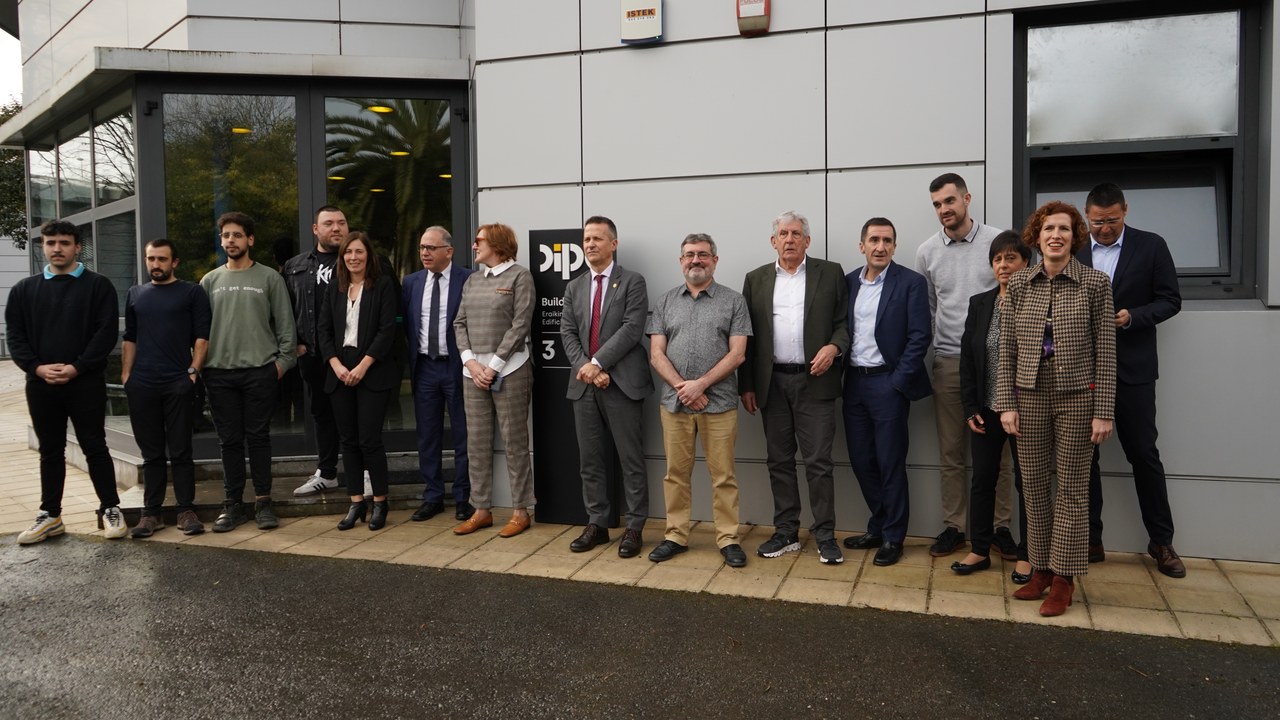Hyperion, the new supercomputer at DIPC
This morning, the Minister Jokin Bildarratz visited the new Hyperion supercomputer, located at the Donostia International Physics Center (DIPC). With more than 14,000 cores and 150 TB of RAM, Hyperion triples the power of its predecessor and serves the entire research community of the Basque Country

The Minister of Education of the Basque Government, Jokin Bildarratz, together with the Deputy Minister for Universities and Research, Adolfo Morais, and accompanied by the President of DIPC, Pedro Miguel Etxenike, visited the Hyperion supercomputer this morning, located at the Supercomputing Centre of the Donostia International Physics Center (DIPC). After the expansion of its power, Hyperion has become the third most powerful supercomputer in Spain, and provides a service to researchers from the Basque Science, Technology and Innovation Network. Specifically, the user network includes the nine Basic Research and Excellence Centres (BERC), the universities of the Basque Country, as well as Cooperative Research Centres such as CIC nanoGUNE and CIC biomaGUNE, health research centres such as Biogipuzkoa and technology centres such as Tecnalia.
Since 2017, the Department of Education has invested 5,925,000 euros in the acquisition and improvement of Supercomputing equipment. Of this investment, 2.8 million corresponds to the construction and commissioning of Hyperion.
Hyperion is already used to simulate the formation of galaxies, the behaviour of new materials, developments in quantum technologies, artificial intelligence and computational chemistry among other projects. These types of supercomputers are intended to facilitate the work of researchers because they are capable of breaking down a large problem into several small, manageable ones. The results from each of them are then combined to find the final solution in a shorter period of time.
As highlighted by the director of the Supercomputing Centre, Txomin Romero, Hyperion has more than 14,000 cores and 150 TB of RAM, and has three times the power of its predecessor, the Atlas supercomputer. It currently provides services to more than 500 scientists in our ecosystem.
The construction of Hyperion is part of the overall strategy of the Basque Government's Department of Education to provide the scientific community with the necessary tools and infrastructures to carry out its work. As a result of this commitment, in addition to the arrival of Hyperion at DIPC, the BERC Biofisika Bizkaia currently houses the most advanced high-resolution cryo-microscope of the moment, and the BCBL has installed an innovative magnetoencephalography equipment for recording cortical activity.
Hyperion is aligned with the generation of new knowledge through the four strategic areas identified by the IKUR Strategy: Neurosciences, Quantum Technologies, Neutrionics (neutron and neutrino physics) and Supercomputing and Artificial Intelligence, as well as other important lines of the Basque research community, such as Astrophysics and Cosmology, Climate Science or Materials Science with advanced properties.
During the visit, Minister Bildarratz took part in a meeting with researchers working in the Basque Country who have obtained an ERC Grant from the European Commission. Hyperion and the rest of the scientific infrastructures allow the scientific network to continue increasing its international recognition, as proven by the increase in the number of research projects that currently have the aforementioned European recognition. The Basque Country currently has a total of 28 active ERC grants, of which ten are ERC Starting Grants; ten are ERC Consolidator Grants; six correspond to the Advanced Grant category and another two are ERC Synergy Grants.
